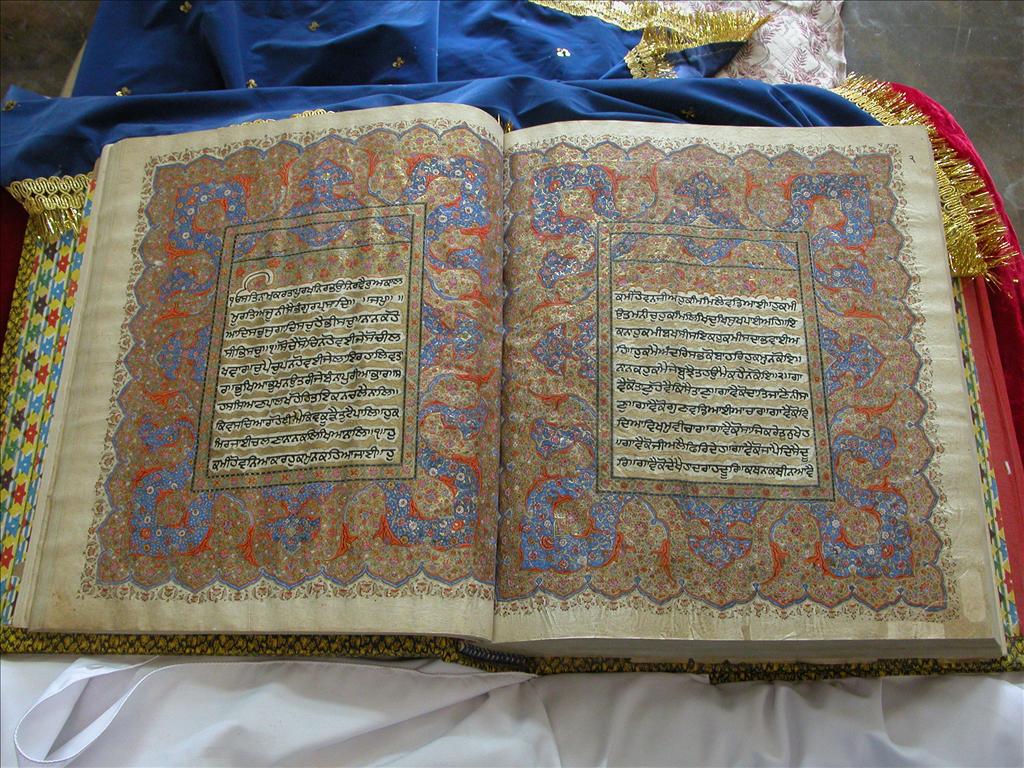 Sikhs all over the world celebrate ‘Baisakhi’ or ‘Vaisakhi’ as a Festival to commemorate the establishment of the Khalsa Panth.
Sikhs all over the world celebrate ‘Baisakhi’ or ‘Vaisakhi’ as a Festival to commemorate the establishment of the Khalsa Panth.
According to the Sikh history, the roots of Baisakhi go back to 1699 and Guru Gobind Singh Ji, the tenth Guru of the Sikhs, who formed the ‘Kalsa,’ or the Brotherhood of Saint Soldiers to fight against tyranny and oppression.
The story of Baisakhi also related to the martyrdom of Guru Teg Bahadur, the ninth Sikh Guru who was publicly beheaded by Aurungzeb, the Mughal ruler.
Aurungzeb wanted to spread Islam in India but Guru Teg Bahadur stood up for the rights of Hindus and Sikhs and the Mughals therefore saw him as a threat.
After the death of Guru Teg, his son, Guru Gobind Singh became the next Guru of the Sikhs.
He was keen to instil courage, strength and spirit of sacrifice among his fellow men. He chose Baisakhi Day at Keshgarh Sahib near Anandpur on March 30, 1699 to fulfil his dream.
When thousands of people assembled on the occasion, Guru Gobind Singh came out of the tent carrying an unsheathed sword. He gave a powerful speech to infuse courage amongst fellowmen.
At the end of the speech, he said that every great sacrifice accompanied every great deed and asked those prepared to sacrifice their lives to step forward.
A young man offered himself for sacrifice at this third call. The Guru took him inside the tent and reappeared alone with a bloodied sword. Guru Gobind Singh asked for another volunteer. This was repeated until five Sikhs had gone into the tent with the Guru. Everyone present was worried and thought that he had killed the five young men.
At this point, the Guru presented all the five men before the people. Everyone was surprised to see them alive, wearing turbans and saffron-coloured garments.
The Blessed Five
 The Guru called the five men ‘Panj Piare’ or the ‘Beloved Five.’
The Guru called the five men ‘Panj Piare’ or the ‘Beloved Five.’
The Guru blessed them at a Pahul ceremony.
In an iron vessel, he stirred with a sword called ‘Khanda Sahib,’ the batasha that his wife Mata Sundari Ji had put into water. The congregation recited verses from scriptures as the Guru performed the sacred ceremony.
The water was now considered the sacred nectar of immortality or ‘Amrit.’
It was first given to the five volunteers, followed by the Guru and the other people present. With this ceremony, all those present, irrespective of caste or creed, became members of the Khalsa Pantha (the Order of the Pure Ones).
The Guru regarded the Panj Piare as the first members of the Khalsa.
With the constitution of the Panj Piare, the so-called high and low castes were amalgamated into one, known as ‘Khatri’(shopkeeper), ‘Jat’ (farmer), ‘Chhimba’ (calico printer) ‘Ghumar’ (water-carrier) and ‘Nai,’ (Barber).
The Transformation
The Guru gave the surname of Singh (Lion) to every Sikh and took the name for himself. From Guru Gobind Rai, he became Guru Gobind Singh.
 This was seen as a great step in national integration because society at that time was divided based on religion, caste and social status.
This was seen as a great step in national integration because society at that time was divided based on religion, caste and social status.
Guru Gobind Singh also bestowed on Khalsa, a unique Sikh identity.
He directed Sikhs to wear five Ks, namely Kesh (long hair), Kanga (comb), Kirpan (dagger), Kachera (shorts) and Kara (bracelet).
Guru Gobind Singh discontinued the tradition of Gurus and asked all Sikhs to accept Guru Granth Sahib as their Eternal Guide.
He urged them to come to him with their hair and beard unshorn to get baptised by the sword.
Source: Baisakhi Festival of Sikhs






